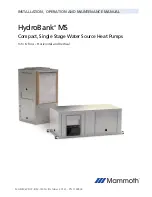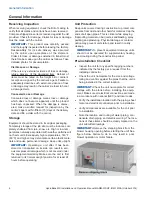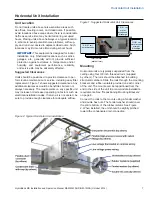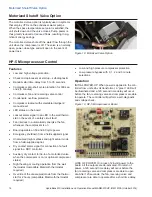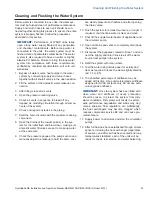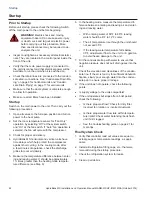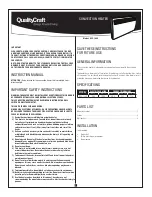
10
HydroBank MS Installation and Operation Manual MAMM-WSHP-IOM-1MSA (October 2014)
Vertical Unit Installation
Vertical Unit Installation
Location
Vertical units are typically installed in a small mechanical
room or closet, with discharge ductwork routed overhead
into the conditioned space. See Figure 8. Return air may
be ducted or non-ducted. If non-ducted, provision must be
made for return air to freely enter the mechanical room.
This is often accomplished by using a louvered door at the
entrance. A sound baffle may be needed on the door to
attentuate noise from the unit.
IMPORTANT:
This equipment is designed for indoor
installation only. Sheltered locations such as attics,
garages, etc., generally will not provide sufficient
protection against extremes in temperature and/or
humidity, and equipment performance, reliability,
and service life may be adversely affected.
Install the unit on a rubber or neoprene mounting pad
for sound isolation. The pad should be at least 3/8 inch
thick.
Suggested Service Clearances
Figure 7 shows minimum suggested clearances. Any
additional clearances would be beneficial, but not
always necessary. Units need to be accessed from
the front to change the filter and to access the electri-
cal panel, blower motor, air coil and compressor com-
partment. The requirements on any specific unit may
increase or be reduced depending on several factors
such as maintenance requirements and mechanical or
electrical installation codes.
Figure 7: Suggested Vertical Unit Clearances
2 ft (61 cm)
service access
1 ft (31 cm)
non-ducted
units for
even air
distribution
across coil
filter removal
(width of filter)
Piping
Heat pumps are typically connected to supply and return
piping in a two-pipe, reverse-return configuration, which is
inherently self-balancing. It also requires only trim-balanc-
ing where multiple heat pumps with different flow and pres-
sure drop characteristics exist in the same loop.
Supply and return run-outs usually join the heat pump via
short lengths of high-pressure, flexible hose which serve
as sound attenuators for both heat pump operating noise
and hydraulic pumping noise. One end of the hose should
have a swivel fitting to facilitate removal for service. Make
sure that threaded fittings are sealed. Teflon tape can be
used to provide a tight seal.
For geothermal applications, all water lines and valves
should be insulated to prevent condensation.
Figure 8: Typical Vertical Unit Mounting

